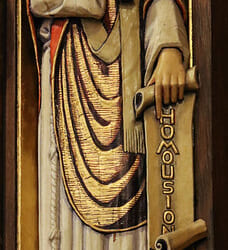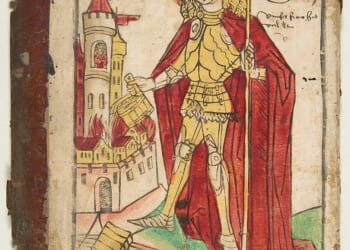The OV-10’s rugged construction and ability to loiter for extended periods made it ideal for the dense jungles, mountainous terrain, and unpleasantly unpredictable weather of Vietnam.
The dawn of the Cold War also brought with it the rise of hundreds of guerilla movements throughout what is now known as the “developing world.” Alienated by Western colonialism, nationalist movements across the Global South, often enraptured by the Soviet Union’s siren song of communism. From Algeria to Malaya to Vietnam, the AK-47-wielding Marxist guerilla was ubiquitous. The Western world fought against these guerrillas from Africa to Asia to South America, with varying degrees of local legitimacy and success.
America’s largest conflict during this era was the Vietnam War, a decade-long losing struggle to suppress a Vietnamese communist insurgency and build up the inept and unpopular military government of South Vietnam. As America’s horrific experience in that war dragged on, the US military increasingly needed platforms to better carry out the counterinsurgency (COIN) aspect of the conflict.
Enter the North American Rockwell OV-10 Bronco.
The Bronco Was One of the Weirdest Planes Ever Built
The Bronco was a unique aircraft specifically tailored for the challenges of unconventional warfare. Its deployment to Vietnam showcased its adaptability, reliability, and critical contributions to reconnaissance, forward air control, and close air support (CAS) mission sets.
When the Pentagon conceived of the OV-10 Bronco, it was out of recognition for the fact that traditional high-performance jets like the F-4 Phantom—designed to counter the Soviet Union, a great power adversary—were poorly suited for low-intensity conflicts involving close coordination with ground forces.
The Navy, Marine Corps, and Air Force collaborated on the Light Armed Reconnaissance Aircraft (LARA) program, which sought a rugged, maneuverable platform for observation, light attack, and forward air control (FAC). North American Aviation, later part of North American Rockwell, won the contract in 1964 for the OV-10 design. The Bronco was a twin-engine, twin-boom aircraft powered by two Garrett T76 turboprop engines, giving it excellent low-speed handling and the ability to operate from short, unimproved airstrips.
The Bronco’s design emphasized versatility. It featured a large, transparent canopy for superior visibility, a spacious rear cargo bay for personnel or equipment, and hardpoints for a wide array of weapons, including machine guns, rockets, bombs, and missiles. The aircraft’s Short Takeoff and Landing (STOL) capabilities allowed it to operate from forward bases, often closer to the front lines than other aircraft.
The OV-10’s rugged construction and ability to loiter for extended periods made it ideal for the dense jungles, mountainous terrain, and unpleasantly unpredictable weather of Vietnam. Its armament usually included four 7.62mm M60 machine guns mounted in sponsons, with external racks capable of carrying up to 3,600 pounds of ordnance. Additionally, the Bronco could carry smoke rockets and white phosphorous markers, essential for directing airstrikes as a forward air controller.
The aircraft’s design reflected hard lessons learned early during the Vietnam War, where slow-moving, observation-oriented aircraft like the O-1 Bird Dog had proven vulnerable to ground fire. The Bronco offered greater speed, armor, and firepower while retaining the agility needed for low-altitude missions.
The Bronco’s Critical Mission Set
The Bronco’s most critical role was as a Forward Air Control (FAC) platform. FAC pilots, often flying at low altitudes—while under intense enemy fire—were responsible for coordinating airstrikes by fast-moving jets and attack aircraft. The Bronco’s excellent visibility, long loiter time (up to five hours), and ability to mark targets with smoke rockets or white phosphorus made it exceptionally effective in this role.
Flying at low altitudes, Bronco pilots could identify enemy positions, direct artillery fire, and guide fighter-bombers to their targets with precision. This was particularly important in Vietnam, where dense jungle canopies and elusive Viet Cong forces made target identification from afar extremely difficult.
The Bronco’s close air support duties and light attack missions were appreciated by friendly forces on the ground. It could engage enemy troops, bust up supply lines, and break enemy fortifications with a wide assortment of guns, rockets, and bombs. The bird’s infrared sensors and flares could detect and attack enemy convoys, too.
Of course, the Bronco had its share of drawbacks. Its low-flying mission sets and relatively slow speed meant it was a serious target for the North Vietnamese and Viet Cong—though, as noted, it was more survivable than earlier observation aircraft.
Several OV-10s were lost to enemy action, particularly during forward air control missions over heavily defended areas. Maintenance in the humid conditions of Vietnam further contributed to equipment problems for most US systems. Yet the Bronco’s relatively simple design helped to mitigate the complications caused by the unfriendly environment.
The Bronco Left a Legacy for Attack Aircraft
The OV-10 had a lasting operational impact on the American war effort in Vietnam. Its ability to bridge the gap between ground forces and air support improved coordination and saved many lives. The aircraft’s versatility allowed it to fill roles that no other platform could, from directing massive B-52 strikes to engaging small enemy units in close-quarters combat. Its rugged design and ability to operate from austere bases made it a reliable workhorse for Uncle Sam.
The OV-10’s service in Vietnam cemented its reputation as one of the most effective COIN aircraft of its era. After the war, it continued to serve with the US military in various roles, including drug interdiction and special operations, until its retirement in the 1990s. This platform would go on to influence the development of America’s most iconic CAS plane, the A-10 Thunderbolt II “Warthog.”
There have even been proposals to resurrect or modernize the design of the OV-10 Bronco for contemporary COIN missions. Granted, this has not been too serious of an effort. Still, it indicates how useful this plane was—and how much it has passed on to its successors.
About the Author: Brandon J. Weichert
Brandon J. Weichert, a Senior National Security Editor at The National Interest as well as a contributor at Popular Mechanics, who consults regularly with various government institutions and private organizations on geopolitical issues. Weichert’s writings have appeared in multiple publications, including the Washington Times, National Review, The American Spectator, MSN, the Asia Times, and countless others. His books include Winning Space: How America Remains a Superpower, Biohacked: China’s Race to Control Life, and The Shadow War: Iran’s Quest for Supremacy. His newest book, A Disaster of Our Own Making: How the West Lost Ukraine is available for purchase wherever books are sold. He can be followed via Twitter @WeTheBrandon.
Image: Shutterstock / BreizhAtao.

















